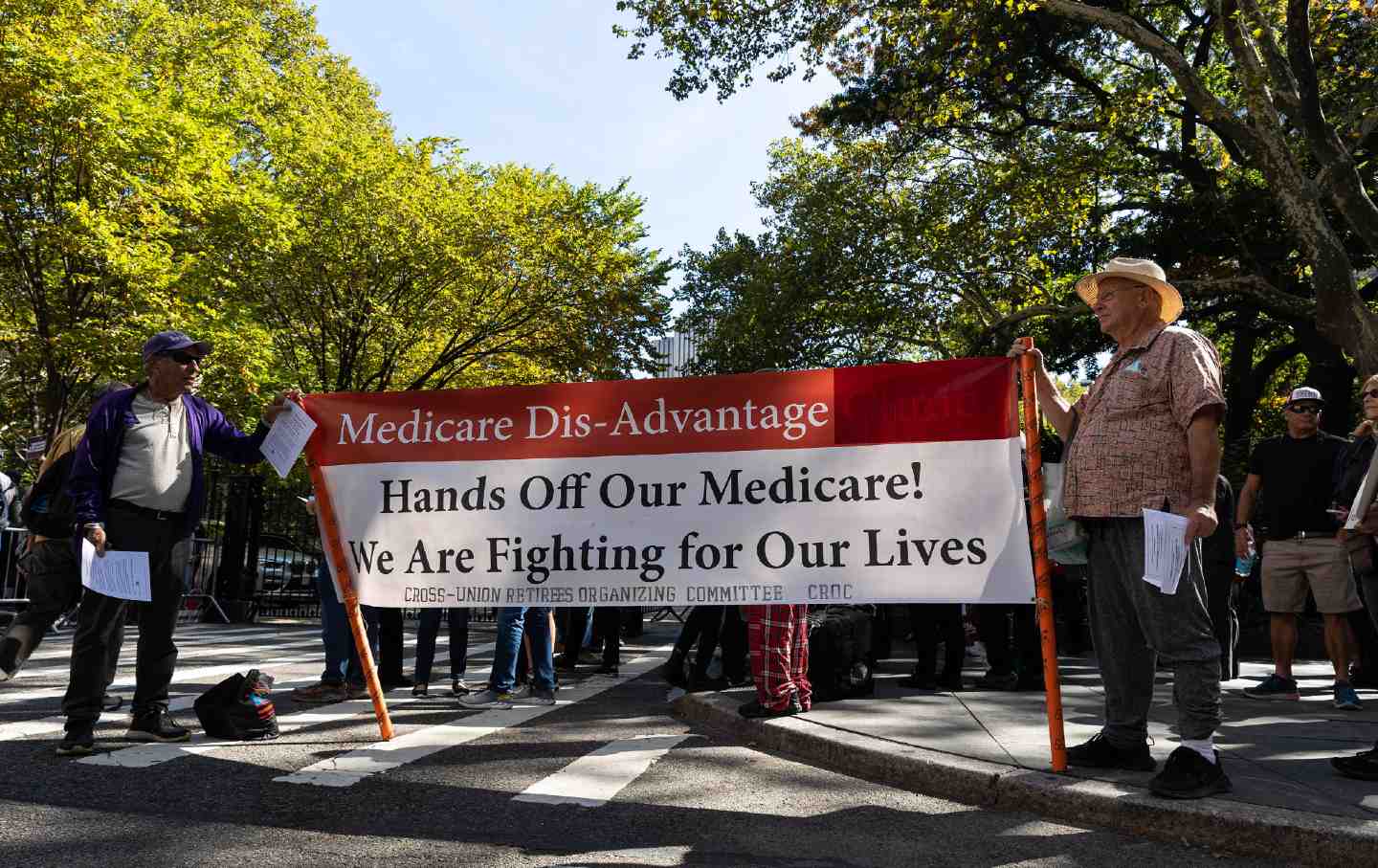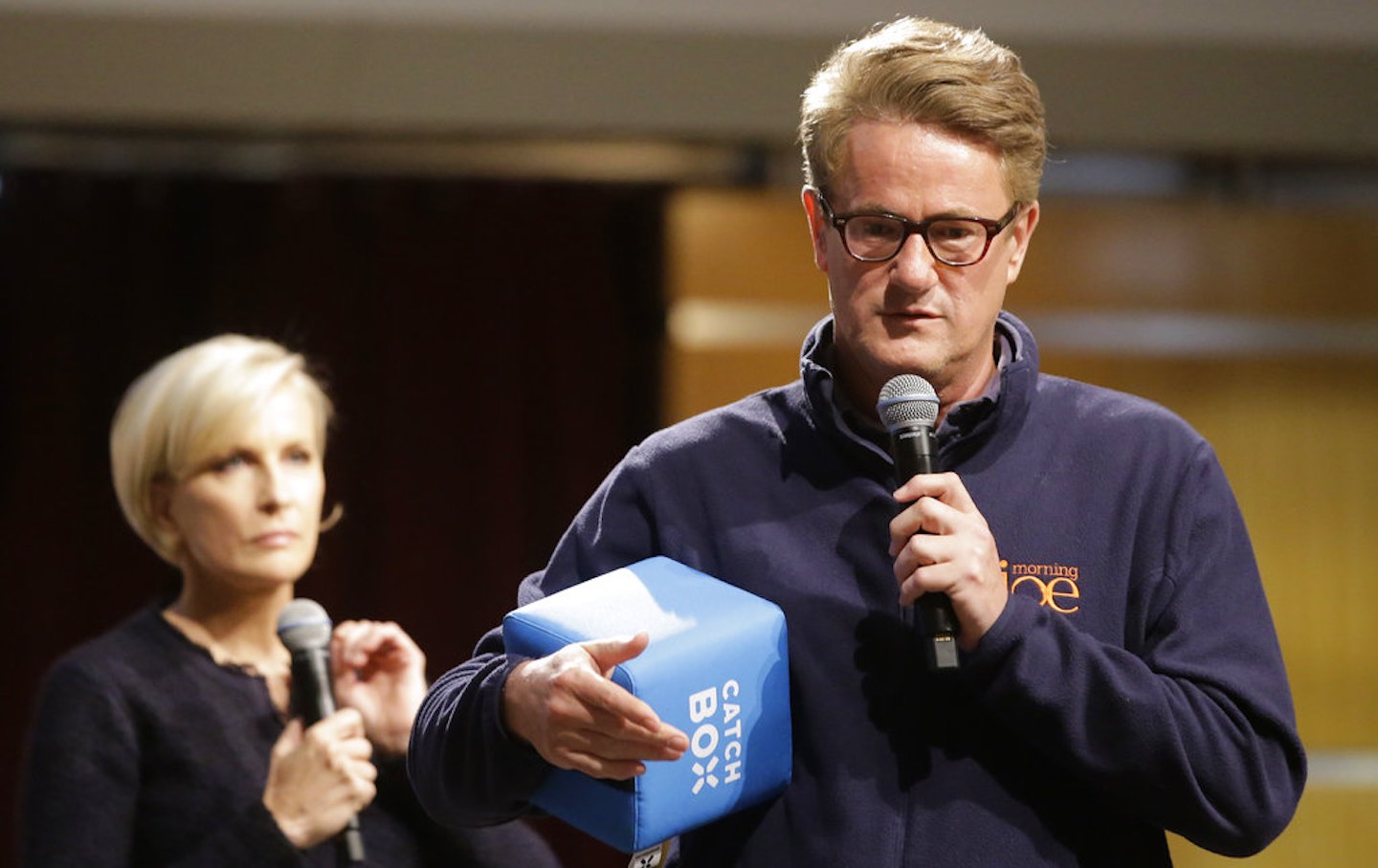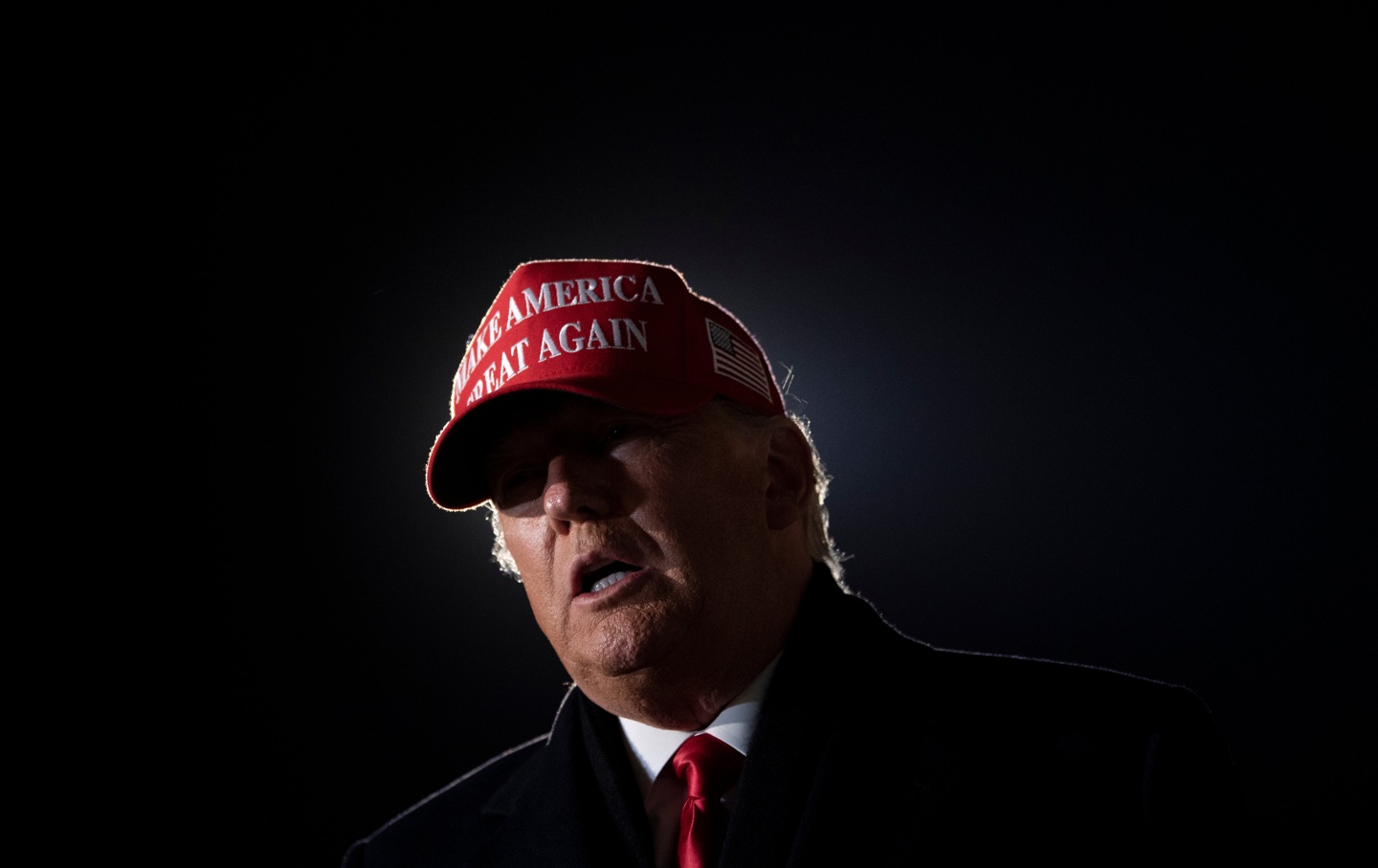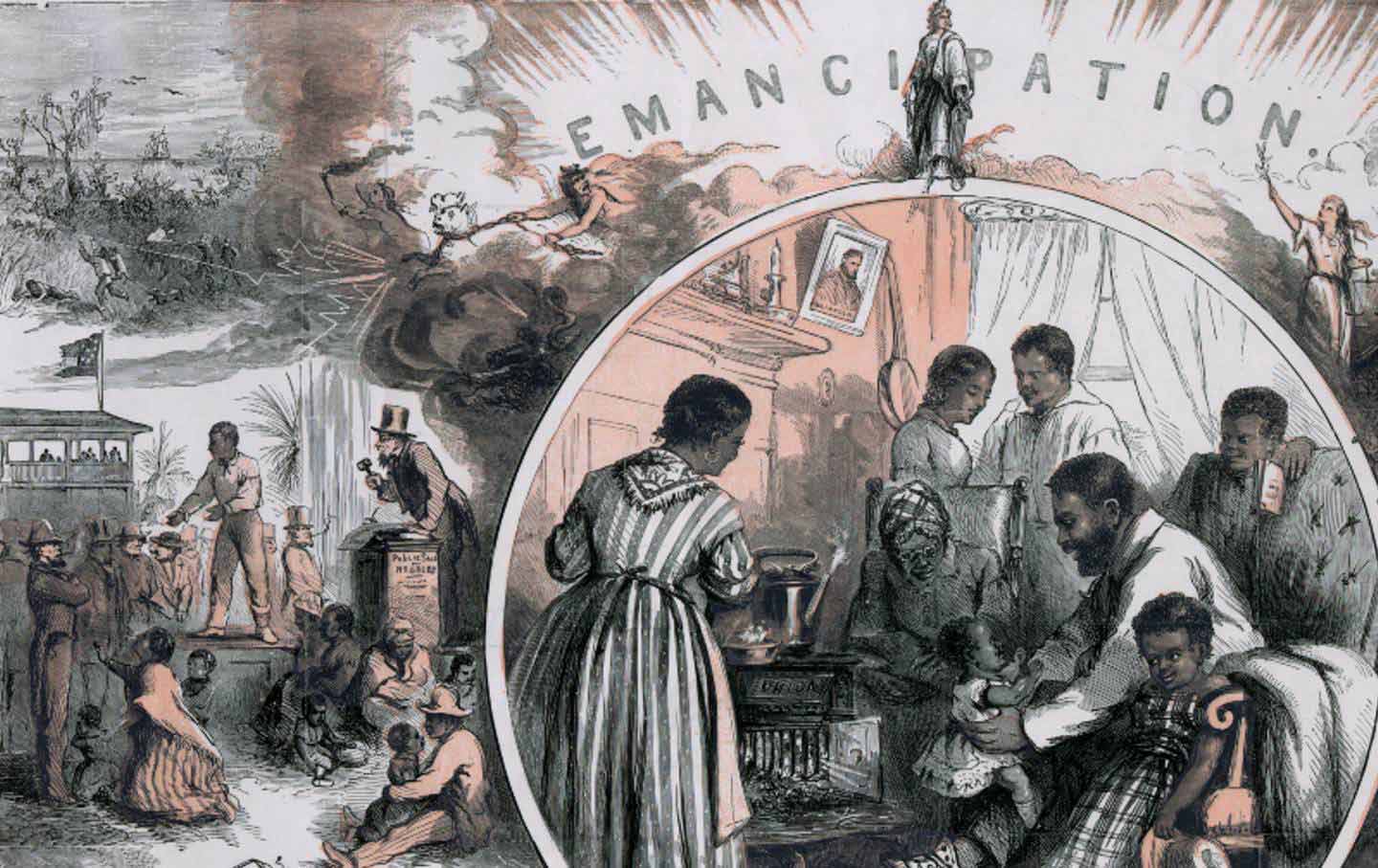Medicare Dis-Advantage: Overpayments and Inequity
The very “choice” that Medicare Advantage is said to offer is undermining Medicare’s promise of equal and universal care for seniors.

Medicare Advantage—the privatized Medicare plans run by insurance firms but funded by the federal government—rips off taxpayers. On this there is little controversy. In March, MedPAC, Congress’s nonpartisan advisory board on Medicare policy, estimated that this year alone taxpayers will overpay Medicare Advantage plans by $83 billion—the savings to Medicare if all of those plans’ enrollees were instead covered by the traditional, fully public Medicare program. A 2022 New York Times exposé, “’The Cash Monster Was Insatiable’: How Insurers Exploited Medicare for Billions,” lays out the gory mechanisms—like fraudulent schemes (known as “upcoding”) to make patients look sicker on paper, which ups payouts from the government.
So much for the alleged efficiencies of the private sector in healthcare. Still, if these overpayments were the only problem with Medicare Advantage, giving the insurance firms a big haircut might fix the program’s defects. The problems, however, run deeper.
The core business model of Medicare Advantage relies on denying care to enrollees; lower outlays for care mean bigger profits. Implementing that strategy requires an immense, and immensely wasteful, insurance bureaucracy that consumes about 14 percent of Medicare Advantage revenues, sevenfold higher than traditional Medicare’s 2 percent overhead. Even worse, Medicare Advantage—which has grown to cover half of all Medicare beneficiaries—is undermining a cornerstone of Medicare: its promise of equitable, single-tier care for the nation’s elderly.
The New Deal did not, despite the efforts of some reformers, give us universal healthcare. President Harry Truman’s postwar push for national health insurance was defeated by a McCarthyite campaign led by the American Medical Association. Subsequently, the Truman-era supporters and architects of national health insurance plans retreated to a narrower vision: a program just for the elderly, which they hoped to expand later. After Democrats swept the 1964 midterm elections amid historic labor and civil rights mobilizations, that vision came to fruition when President Lyndon Johnson signed a bill establishing Medicare.
Medicare was, in many respects, a compromise. The price for the votes of Congressional Dixiecrats (segregationist Southern Democrats) for that federally administered program for the (disproportionately white) elderly, was an assurance that Medicare wouldn’t be expanded to the non-elderly poor, many of them Black. That assurance took the form of Medicaid, a program that offered states federal funding but largely ceded control to state governments—a bow to “states’ rights.” And for the elderly, Medicare emulated private insurers by requiring substantial out-of-pocket payments in the form of copayments, deductibles, and uncovered services, gaps in coverage mostly absent from Canadian- and European-style universal healthcare.
But for all its faults, Medicare retained a universalist, New Deal ethos, covering all older adults—rich and poor—and granting access to virtually all doctors and hospitals. Not everyone had Medicare, but virtually everyone would upon turning 65, at which point their insurance and access to care would be, at least legally, the same. It was one federal program—which allowed the federal government to wield Medicare to desegregate Southern hospitals in the years after its passage: No hospital could afford to turn it down.
But soon, private insurers began to infiltrate Medicare. Legislation signed by President Ronald Reagan opened the door for private insurers to sell Medicare “managed care” plans that could retain as profit any funds not spent on enrollees’ care. The share of seniors enrolled in those privatized Medicare plans, less than 5 percent in 1985, rose to nearly 20 percent by the end of the 1990s. President George W. Bush’s 2003 Medicare Modernization Act created the current iteration of privatized Medicare, dubbed Medicare Advantage, which really opened the floodgates to insurers. Since then, the share of seniors enrolled in the privatized Medicare Advantage plans has progressively risen, topping 50 percent for the first time last year, when UnitedHealthcare (the nation’s largest insurer) garnered nearly half of its total premium revenues from Medicare Advantage, and another quarter from Medicaid managed-care contracts.
From its inception, privatized Medicare has been rife with fraud and mismanagement. The largest privatized Medicare contractor of the Reagan era—International Medical Centers (IMC)—enrolled 197,000 seniors before collapsing in 1987—leaving $200 million in unpaid bills from doctors, hospitals and other providers. During its short run, IMC spent lavishly on administrators and lobbyists, hiring at least nine former federal officials, including the former general counsel and chief of staff of the Department of Health and Human Services, and the head of the HHS agency that oversees Medicare. (The government/insurer revolving door persists: Obama’s Medicare chief left to head the insurance industry’s trade association, and Biden’s director of the Medicare “Innovation Center” previously served as vice president of an insurance giant.) IMC’s President Miguel Recarey—who had earlier been accused of embezzling funds from a children’s hospital and boasted about his relationship with mob boss Santos Trafficante—was accused of swindling $230 million from Medicare and fled to Spain after being indicted for bribery, conspiracy, and wiretapping, amid charges that IMC provided grossly inadequate care and pressured sick (and hence unprofitable) enrollees to disenroll; he remains a fugitive. The state of Florida ultimately seized the company and sold it off to Humana, which remains a leading MA insurer today.
While insurers have, over time, refined their profit-maximizing tactics, there is considerable continuity. Plans have long engaged in so-called “favorable selection”—recruiting healthier seniors with lower health costs (“cherry-picking”) and avoiding or ejecting the sicker ones whose high medical costs threaten plans’ profits (“lemon-dropping”). Insurers have used diverse means to achieve this, like holding enrollment seminars in non–wheelchair accessible buildings, offering gym memberships as a perk (which appeals to healthier, more physically active seniors), and running glossy TV commercials, many depicting robust elders mountain biking, skiing, or even jumping on a trampoline (signaling that such plans are not intended for frail elders).
MA plans coax expensively ill members to disenroll by, for instance, putting medications they need (e.g., cancer chemotherapies) into the highest drug benefit tier, which loads out-of-pocket costs onto the sickest patients. Similarly, unlike traditional Medicare, MA plans limit enrollees to narrow networks of doctors and hospitals, thwarting enrollees’ access to specialized providers like psychiatrists and cancer hospitals. For patients with complex illnesses, these managed-care restrictions can be a major barrier to care. Consequently, sicker and disabled seniors (such as those with dementia, or needing nursing home or rehabilitation care) disproportionately depart MA for traditional Medicare—further enriching the MA pool with healthier seniors, reducing insurers’ per-patient outlays for care and increasing their profits. The upshot is a windfall for insurers: MedPAC estimates that insurers will garner overpayments of $35 billion this year thanks to “favorable selection” alone.
Such overpayments have persisted—indeed, increased—despite reforms specifically designed to rein in this misbehavior. Since 2004, government payments to MA plans insurers have been based on the average sickness levels (i.e., risk scores) of their beneficiaries, which the government calculates from diagnosis codes that the plan submits. Insurers quickly learned how to play that game. They began padding enrollees’ medical records with (often irrelevant) diagnoses to make them look sicker on paper—so-called “upcoding.” Regulators, in an effort to get ahead of insurers, slapped a discount on payments to MA plans to account for their upcoding. But insurers again outmaneuvered the regulators, coding ever more avidly, using innovative techniques like dispatching nurses to enrollees’ homes—not to treat enrollees but merely to put more diagnostic codes on paper, including some based on highly suspect in-home tests. Upcoding has allowed insurance firms to extract enormous overpayments—an estimated $50 billion in 2024 alone—on top of the aforementioned “favorable selection” bonanza.
Popular
“swipe left below to view more authors”Swipe →Two of us (with Ida Hellander) previously estimated total taxpayer overpayments to Medicare Advantage plans at $282.6 billion from 1985 to 2013. Since then, overpayments have ballooned—totaling more than $400 billion over the past decade, according to MedPAC’s estimates. But even as overpayments deplete Medicare’s finances, Medicare Advantage poses another, even graver threat to the program: undermining its core commitment to equal access and equitable care.
Ironically, even as Medicare Advantage plans soak the taxpayers, their enrollees receive much less care than they would if covered by traditional Medicare. Insurers’ narrow provider networks and onerous prior authorization requirements restrict care through inconvenience and outright payment denials. And (unbeknownst to most patients) insurers often use bonuses or penalties to incentivize physicians—especially the tens of thousands that they now directly employ—to deny care. Reams of research has found that beneficiaries with Medicare Advantage (relative to those in traditional Medicare) receive less medical care, e.g., fewer home care visits from aides, speech therapists, physical therapists, or nurses. Among cancer patients requiring complex surgeries, Medicare Advantage beneficiaries are less likely to get surgery at high-volume cancer hospitals where quality is highest, and suffer longer delays in treatment and higher death rates. In effect, Medicare Advantage has introduced fresh inequities into Medicare. Increasingly, it is no longer one national program providing a single tier of access to nearly all providers: today, Medicare resembles our broader fragmented, multitiered and unjust insurance system.
Why, then, would beneficiaries enroll? Some are bamboozled by insurers’ slick and ubiquitous marketing. During Medicare’s seven-week open enrollment period in 2022, TV viewers were inundated by 643,852 English-language ads and more than 40,000 in Spanish. Plans also deploy some of their overpayments to offer some extra benefits—e.g., free eyeglasses or partial dental coverage—that are attractive to many seniors. And most importantly, insurers can reduce seniors’ monthly premiums for drug coverage—sometimes to zero—as well as their copayments for routine care like office visits.
Unsurprisingly, these perks are most attractive to beneficiaries with little cash to spare. Consequently, low-income and non-white seniors disproportionately “choose” Medicare Advantage—especially “zero-premium” plans and restrictive, HMO-style coverage. In other words, increasingly, Medicare beneficiaries are being sorted; even among Medicare Advantage plans, a socioeconomic gradient has emerged, with more restrictive plans enrolling poorer beneficiaries. And this sorting has medical consequences: One study found, for instance, that enrollees in stingier plans suffer higher death rates than those in less restrictive ones.
The harms resulting from Medicare Advantage plans’ privatization of Medicare are hence even more serious than is commonly realized. They don’t just extract tens of billions in overpayments from the federal treasury annually (though they do), or deny potentially life-saving care to the sickest enrollees (though they do that as well), and waste billions on the administrative bureaucracy needed to deny care (they do that, too). The very underlying “choice” that Medicare Advantage is said to offer undermines Medicare’s Great Society promise of equal and universal care for seniors.
Medicare Advantage enrollment continues to rise: if that trend continues, insurers will come to entirely dominate the program. But traditional Medicare’s serious shortcomings, including inadequate benefits and high cost-sharing, should not be whitewashed. Fortunately, as it turns out, the two problems have a single solution: end Medicare Advantage and use the tens of billions in savings to expand benefits for all beneficiaries.
Or better yet, pass a nonprofit Medicare for All reform that would address these problems, and amend current Medicare payment policies that have tolerated, and even encouraged, healthcare profiteering and the corporate takeover of care. Such reform could deploy the even larger savings on administrative bureaucracy (about 17 percent of health spending, equivalent to $832 billion in potential savings this year) to improve coverage for everyone. What we must not do, however, is stand by and watch insurers privatize Medicare to the point where we can no longer recognize it.
We cannot back down
We now confront a second Trump presidency.
There’s not a moment to lose. We must harness our fears, our grief, and yes, our anger, to resist the dangerous policies Donald Trump will unleash on our country. We rededicate ourselves to our role as journalists and writers of principle and conscience.
Today, we also steel ourselves for the fight ahead. It will demand a fearless spirit, an informed mind, wise analysis, and humane resistance. We face the enactment of Project 2025, a far-right supreme court, political authoritarianism, increasing inequality and record homelessness, a looming climate crisis, and conflicts abroad. The Nation will expose and propose, nurture investigative reporting, and stand together as a community to keep hope and possibility alive. The Nation’s work will continue—as it has in good and not-so-good times—to develop alternative ideas and visions, to deepen our mission of truth-telling and deep reporting, and to further solidarity in a nation divided.
Armed with a remarkable 160 years of bold, independent journalism, our mandate today remains the same as when abolitionists first founded The Nation—to uphold the principles of democracy and freedom, serve as a beacon through the darkest days of resistance, and to envision and struggle for a brighter future.
The day is dark, the forces arrayed are tenacious, but as the late Nation editorial board member Toni Morrison wrote “No! This is precisely the time when artists go to work. There is no time for despair, no place for self-pity, no need for silence, no room for fear. We speak, we write, we do language. That is how civilizations heal.”
I urge you to stand with The Nation and donate today.
Onwards,
Katrina vanden Heuvel
Editorial Director and Publisher, The Nation
More from The Nation

Mr. Scarborough Goes to Mar-a-Lago Mr. Scarborough Goes to Mar-a-Lago
The hosts of Joe Biden’s favorite political talk show have quickly pivoted to kissing the ring of the incoming president.

Watching a Parallel Media Try to Make Trump the Big Sports Story Watching a Parallel Media Try to Make Trump the Big Sports Story
The president-elect did not dominate the world of sports this weekend, but Fox News and Internet tabloids are inventing new realities.

The First Amendment Will Suffer Under Trump The First Amendment Will Suffer Under Trump
Given what’s heading our way, we need a capacious view and robust defense of the First Amendment from all quarters.

Slavery in an Age of Emancipation Slavery in an Age of Emancipation
Robin Blackburn’s sweeping history of slavery and freedom in the 19th century.

How Wisconsin Lost Control of the Strange Disease Killing Its Deer How Wisconsin Lost Control of the Strange Disease Killing Its Deer
Despite early containment efforts, chronic wasting disease has been allowed to run rampant in the state. That’s bad news for all of us.

The Prison Rodeo at the Heart of Legal Enslavement The Prison Rodeo at the Heart of Legal Enslavement
Angola prison workers make between 2 and 40 cents an hour. They also have a controversial outlet for recreation and to vend their wares at market rate: a rodeo.


